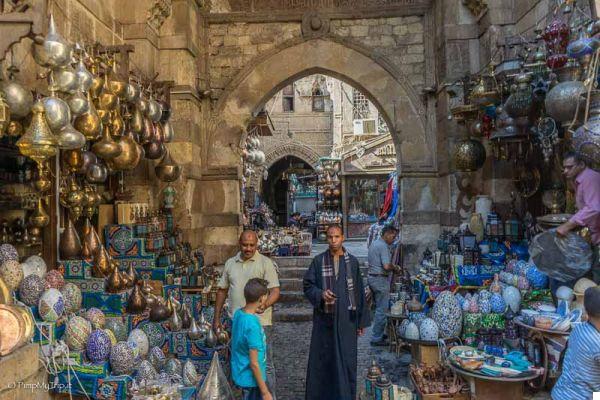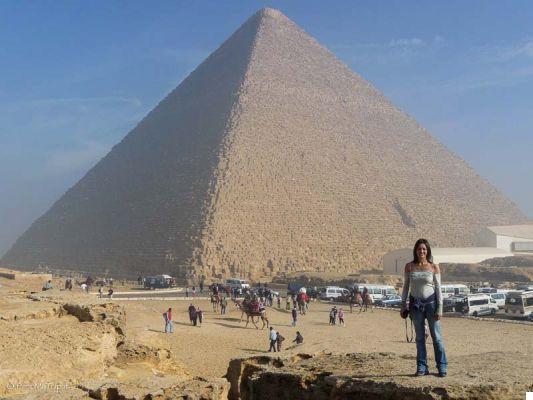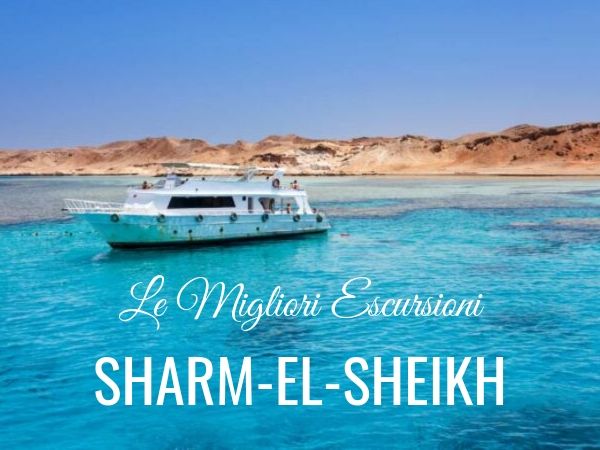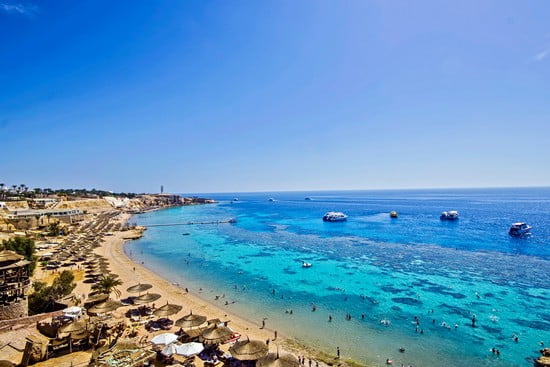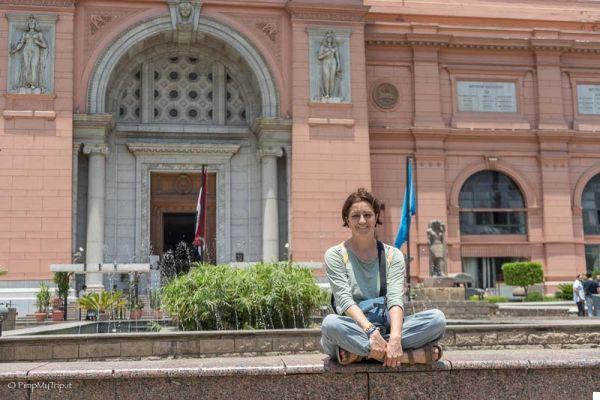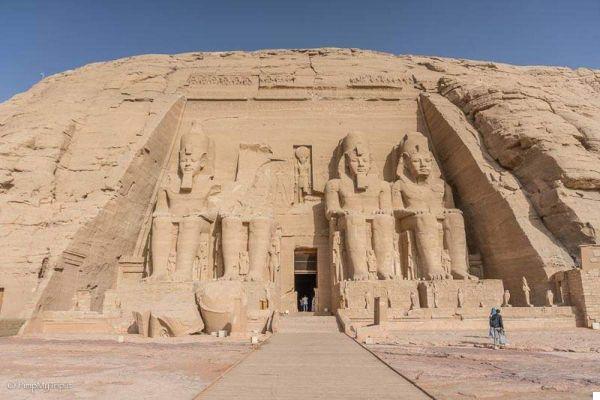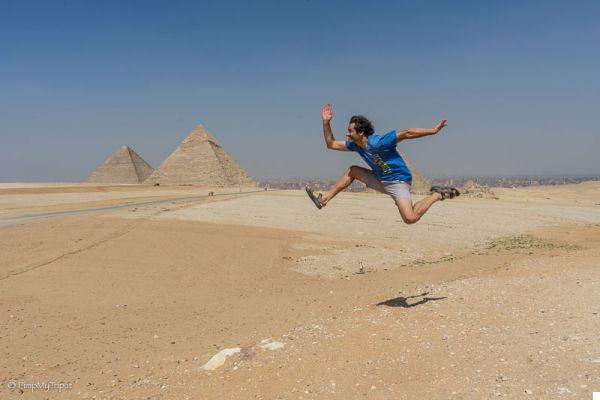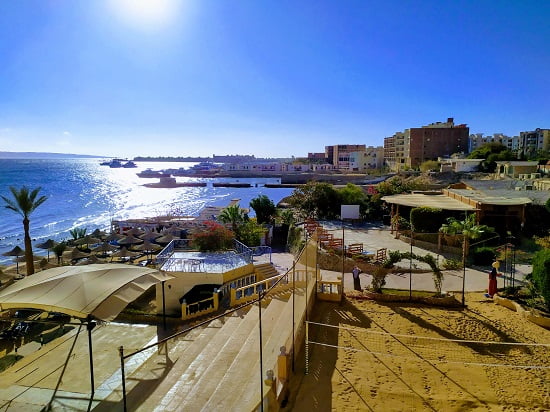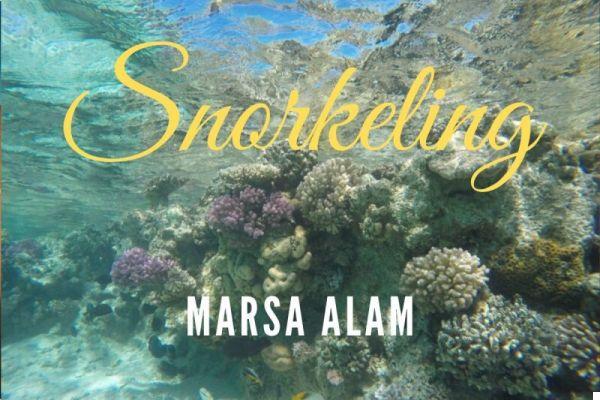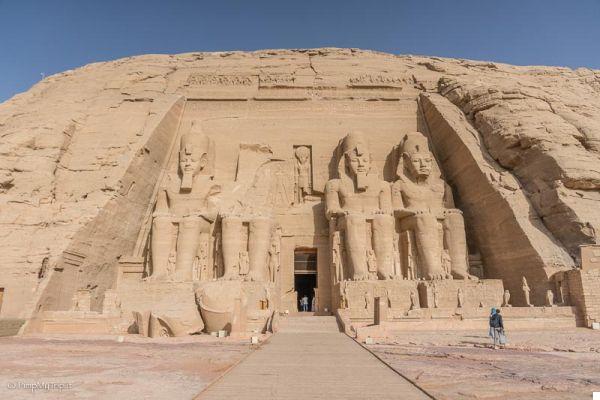In the Victorian era, one Nile cruise it was the only way to see the most iconic attractions of the ancient world Egypt. Thought alone evokes romantic images of days spent in luxury, drifting by the current towards the magnificent temples of the ancient pharaohs.
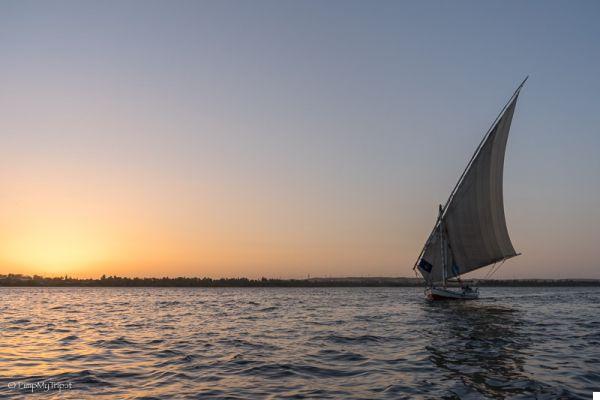
Traditionally a Nile cruise is considered the centerpiece of a trip to Egypt but unlike in the past, the options are many more: from extra-luxury cruises with swimming pool to the cheaper ones (but always with every comfort) up to the more adventurous felucca cruises, without comfort, but at a lower price and with that pinch of adventure and the feeling of being catapulted into ancient times that no longer exist.
Until the years of the revolution in Egypt, the Nile was really crowded: more than 200 boats plied its waters daily back and forth between Luxor and Aswan.
Today the situation has changed again. Although more crowded than it was during the golden years of the Victorian era, the Nile has once again become a place of absolute peace to be fully enjoyed and it is for this reason that I personally I recommend going there as soon as possible.
You are looking for one economic Nile cruise but that includes all visits and places of interest with Egyptologist guide?
Guarda THIS OFFER from Civitatis, I don't think you can find better !!
I have done both, both the motor ship cruise (a few years ago) and the felucca cruise (during my last trip) and in this article, I try to weigh the pros and cons of a Nile cruise so that you can decide which and if a Nile cruise is the best way for you to visit Egypt.
- 1 - What to expect from a Nile cruise; which one to choose?
- 2 - What is the best period?
- 3 - The model day of a Nile cruise
- 4 - Typical itinerary and points of interest
- 5 - Pros of a Nile cruise
- 6 - Cons of a Nile cruise
What to expect from a Nile cruise
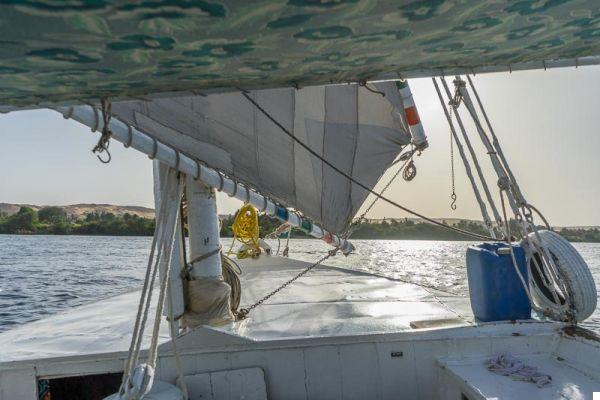
Most Nile cruises begin in Luxor and visit the popular sites of Esna, Edfu and Kom Ombo before arriving in Aswan.
Other routes do the opposite, fly directly to Aswan and proceed north along the Nile to the same viewpoints.
They also exist cruises on Lake Nasser from Aswan to Abu Simbel (south of the dam).
There are several ships to choose from, ranging from traditional paddle steamers (best suited to those who appreciate history and authenticity) to modern luxury cruise ships (geared towards those for whom comfort is a priority) to feluccas.
Budget travelers or backpackers should consider booking a felucca cruise as the second cruise I took.
Feluccas are traditional Egyptian sailing boats, which have continued to trade on the Nile for centuries.
They are carried by the wind and the current and have a more fluid itinerary; furthermore, their smaller size allows them to dock in places of interest that do not have the infrastructure needed by larger cruise ships. There is no luxury in a felucca; you sleep outdoors on the deck in a sleeping bag or with a blanket, food is essential and services are not there… you will have to get them in the Nile!
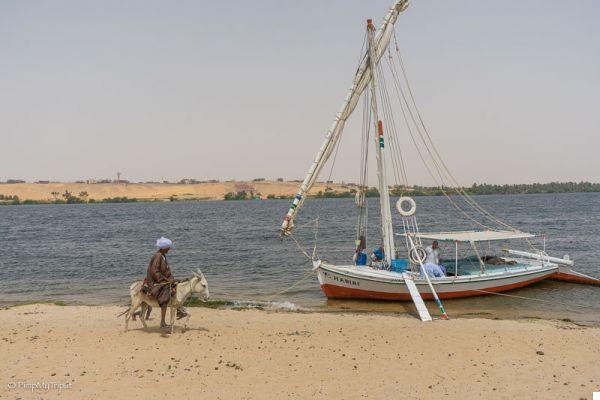
Before my travels to Egypt I was not sure what the difference was between the felucca and dahabeya: while the felucca is a small sailboat without cabin and services, the dahabeya (the term means “the golden one”), is a kind of “floating house” carried by two sails.
Le cruises in dahabeya are among the most luxurious and exclusive ones that exist: just think that in the past it was the means of transport for royal families!
Most motorboat cruises last at least four nights, while by felucca it takes at least 5 to go from Aswan to Luxor. In fact, in felucca you generally proceed in a zig-zag and at night you cannot navigate: therefore it takes more time.
The cruise can also be extended up to a week with the two stops a Dendera e Abydos.
The choice between luxury cruises, last minute cruises and low cost cruises it's easy: given that the itineraries are very similar (if not even the same) what differentiates a cruise from another are the services included and the type of ship and comfort.
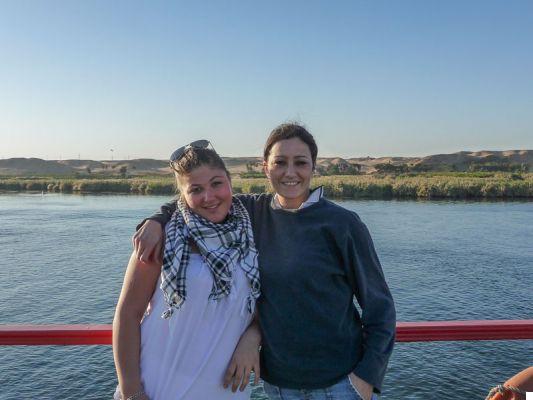
In the end then what determines which Nile cruise to choose are: the budget available, the level of comfort you want to have and the time available.
The food on board motor ships is usually excellent, ranging from generous buffets (low cost cruises) to a la carte dinner menus (luxury cruises).
In felucca, on the other hand, the food is generally very simple: ask first if meat is also included because this is often not the case.
In short, before choosing your cruise, ask the operator or the agency what is included and what is not.
Most Nile cruises are "Full Board" which means all meals are included and they are buffet style: the variety of meals and the quality depend on the chosen ship; these meals are served on a fixed schedule. On some cruises, tea, coffee and other beverages are offered in the bar area.
Usually only seven day Nile cruises include the "All Inclusive" option which means all food and all beverages such as mineral water, soft drinks, hot drinks, coffee, tea, juices and local spirits they are included in the price of the cruise.
Most cruise ship companies employ the services of one Egyptologist guide, who will lead the group to the ancient sites that are visited during the tour.
The days start early to avoid the intense heat of the afternoon, so plan to wake up early at dawn: for this reason all the groups are often in the various places of interest at the same time.
In felucca the guide is not necessarily there and you will have to visit the sites on your own, the positive side is that you will probably avoid the groups and you will have the magnificence of Egypt only before your eyes.
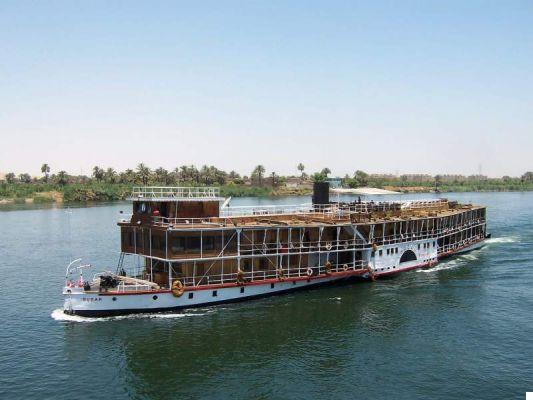
Modern, luxurious ships also typically have a swimming pool to cool off after morning explorations, and most offer evening entertainment in the form of belly dancing shows or themed nights.
What is the best time?
Honestly, despite the best time for a Nile cruise it is from October until April, when the temperatures are pleasant throughout the country, I have also done it in the summer months and it is doable.
It is very hot, but visits are organized during the cooler hours of the day, early in the morning and in the evening, and the heat is relieved by the dryness of the climate. Plus, the lower prices, far fewer visitors and the pleasant breeze that always blows over the Nile make for a cruise a good choice even at this time of year.
The model day of a Nile cruise
Each morning after breakfast, usually buffet style, you will visit temples or tombs, usually in a small group with a guide.
Although some cruises are more expensive, the sites you visit are generally the same.
After the morning tour, return to the boat for refreshments and for the lunch. The pomeriggio it is usually spent visiting another site or enjoying the sights and sounds of the river.
I enjoyed sitting outside on the upper deck of the ship with a drink in hand watching the life go by along the Nile, the fishermen passing on their feluccas the cultivated fields and the palm groves. The scenery varies from the bustle of towns to peaceful villages, from ocher sand dunes to the green of fertile fields.
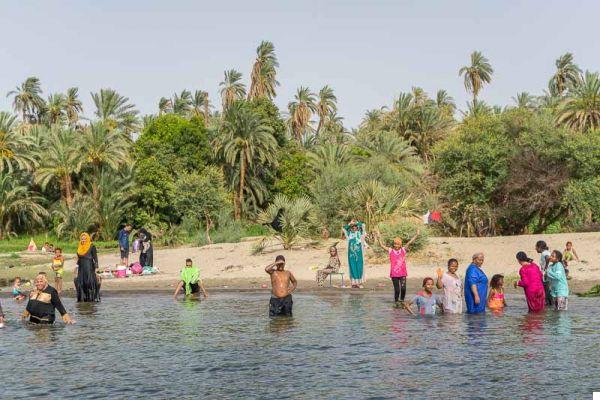
After Dinner some ships organize Egyptian themed dance or evening shows (look at me below in one of these!) while in felucca, after tea and some chat, you go to sleep and the only music is the lapping of the Nile against the keel of the boat.
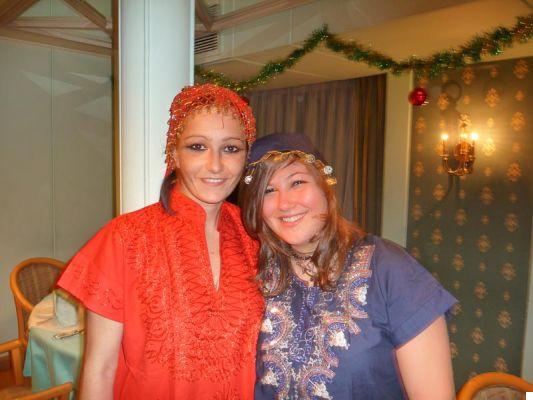
Typical itinerary and points of interest
Templi at Karnak e Luxor
La Luxor city (Thebes as the Greeks had called it) is the capital of Ancient Egypt, and has the highest concentration of temples and tombs in the world as it has been the city of the Pharaohs for many years.
Here we visit the huge complex of Karnak Temple, built in 120 years, and the smallest Luxor Temple, built around 1.400 BC. but equally fascinating.
These temples were once connected by an avenue flanked by sphinxes, which at this time of writing, 2018, is being renovated so that in the years to come travelers will be able to retrace it on foot just like the priests and pharaohs of antiquity.
About 30 different pharaohs added to the Karnak temple over the years. During the visit your guide will point out the diversity of building styles and explain the various representations of the gods that the ancient Egyptians worshiped at different times.
What struck me was the size and scale of the complex: Karnak is the second largest ancient religious site to the world after Angkor Wat in Cambodia. You could spend hours and hours exploring its halls, pillars and stone statues. I was very impressed with the Great Hypostyle Hall, which contains 134 columns that rise 24m (80ft) and are truly HUGE.
Look at this photo below just to get an idea of their size!
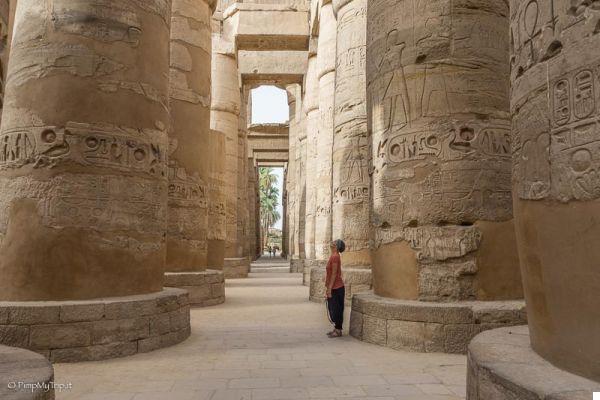
Luxor Temple is located right in the heart of the city, its ancient columns and its tranquility contrast with the chaos of the streets and modern buildings. The temple was dedicated to the god Amun, his wife Mut and his son Khons, the god of the moon.
When you arrive, you will be greeted by two large statues of Rameses II, and throughout the complex you can admire detailed hieroglyphs on the walls and columns. Your guide will help you decipher them and explain their meaning.
I visited the Luxor temple in the evening when it is illuminated and it is really impressive: the problem is that many groups also visit it at sunset so you might find it very crowded.
The Karnak temple, on the other hand, closes early, around 16pm because it is set up for it evening light and sound show.
If you can ask your guide if you can participate, it is definitely worth it, it is very impressive !!!
Kings' Valley
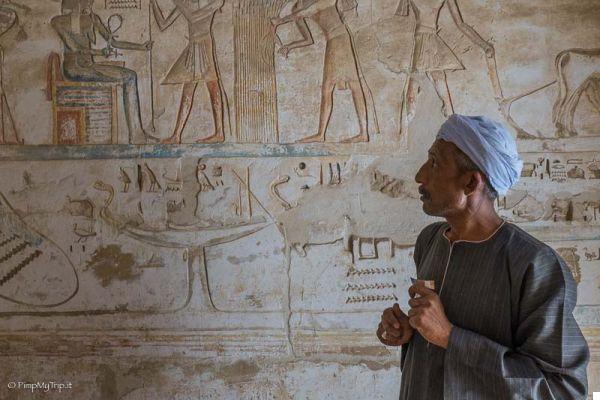
Across the river from Luxor on the west bank of the Nile, the Kings' Valley It has been used as the burial site of pharaohs for over 500 years and is home to 62 known tombs (more are believed to be waiting to be discovered), each containing up to 150 chambers.
Among these are the tombs di Tutankhamon, and various Ramses including Rameses II and III. do not miss that of Set 1: the ticket is not included in the entrance ticket but must be purchased separately and costs 50 dollars, but it is worth it: the colors of the hieroglyphs are still sparkling and intact as if they had been painted the day before.
With the simple entrance ticket you have the right to see 3 graves of your choice: The tombs are open to visitors on a rotational basis to aid in their conservation, so your guide will advise you on the best options on the day you visit.
Like the tomb of Seti 1, others also require a separate payment, such as that of Tutankhamun for example.
The tombs are excavated in a rock amphitheater dominated by a mountain whose shape resembles a pyramid: unlike the Pyramids of Giza, these tombs were dug to be hidden and not plundered by grave robbers.
Unfortunately the grave robbers arrived practically everywhere, but they missed the tomb of Tutankhamun and his treasure has reached us (you will see it exhibited at Cairo museum and it's just awesome)
In addition to the Valley of the Kings, many cruises include a visit to the Valley of the Queens, Temple of Hatshepsut or to Valley of the Nobles (to see the tomb of Sennefer which is a beauty carved deep into the rock and with its ceilings decorated with paintings depicting bunches of grapes).
Temple of Horus (Edfu)
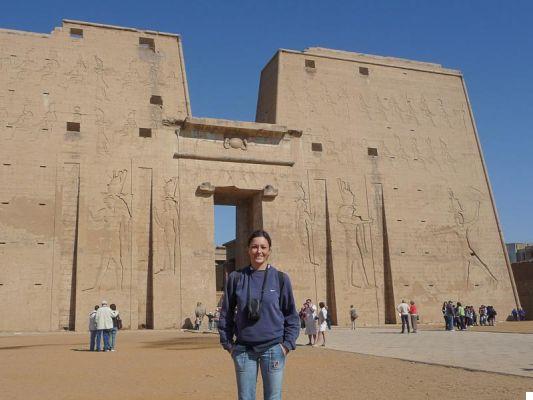
For me, the Edfu Temple (or Temple of Horus) is one of the most impressive sites as it is exceptionally preserved. In fact, in most of the temples in Egypt you can see the ancient remains of walls and columns: here, however, even the roof remains intact.
Upon entering, the huge walls and the darkness of some of the rooms give a real feeling of how the temple must have been at its peak.
Edfu is more recent than Karnak and Luxor, having been built between 237 and 57 BC during the Ptolemaic dynasty. It was dedicated to the falcon god, Horus, who was accused of having defeated the god Seth. Detailed inscriptions on the walls depict scenes from their battle, as well as details of life during the Greco-Roman period of Egypt.
Some of the temple decorations were removed by early Christians at a time when all other religions were banned in Egypt.
Kom Ombo Temple
Further south of Edfu, the Kom Ombo Temple it is located right on the river bank and you usually visit both temples on the same day, one in the morning and one in the afternoon (unless you choose particular types of cruises such as the 7 night one).
The site is unusual in that it is divided into two separate temples dedicated to two different deities: Haroeris, or Horus the Elder, and Sobek, the crocodile god of fertility and protector from the dangers of the Nile.
The temples were built between 180 and 47 during the Ptolemaic dynasty and its structure is symmetrical with duplicated rooms, halls and sanctuaries for the two deities.
Today, much of the temple is in ruins, but the great columns and arches continue to tower over the visitors and as in Karnak it is impressive, looking only at the grandeur of the columns, think about how the ancient Egyptians managed to build them with the means at their disposal.
Next to the temple is the crocodile museum, where about 300 mummified crocodiles are exhibited. Found inside the temple, they were probably sacrificed in honor of the god Sobek.
Aswan (Aswan)
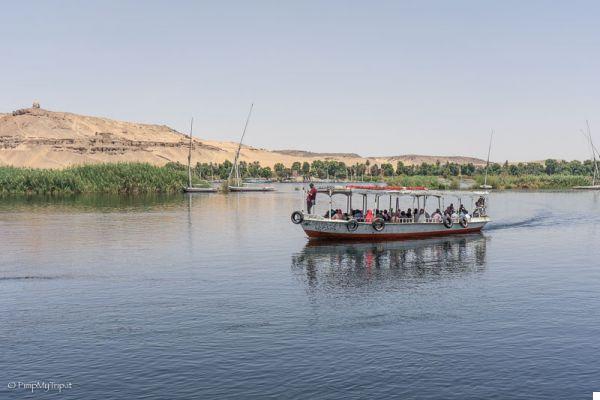
Even if there is less to see in Aswan in terms of ancient ruins, the city shows another side to Egypt through its Nubian culture (ethnic group native to Sudan and southern Egypt).
I personally think it is by far the most beautiful city on the banks of the Nile and a great place to relax watching the dozens of white felucca sails gliding on the current between the huge boulders of the river.
Do not miss the spice market, to go there especially in the evening after 18pm when it also comes alive with the presence of the locals. Here you can find everything from spices to dried fish, from spiced stewed meat to local Nubian crafts and even some Chinoiserie.
Usually the visit to the diga di Aswan is among those included in the cruise programs. The dam was built between 1960 and 1970 to provide water for irrigation, generate hydroelectricity and control flooding of the river.
The dam resulted in the creation of the Lago Nasser behind it, however, which meant the loss of entire Nubian villages that remained submerged by water.
The dam is a military area so the visit means crossing it by bus and stopping at the central point to take some pictures of the Nile which winds its way between the desert dunes and the city of Aswan to the north.
The construction of the Aswan Dam also necessitated theincredible displacement of the two temples of Abu Simbel: in fact, even if left in their original position they would have been submerged so it was necessary to transport them which moved the ancient temples 60 meters higher and 300 meters further back than their original position.
Generally two other excursions included in the Nile cruise are the visit of the Nubian village south of Aswan in felucca and the visit of the Philae temple.
THEexcursion to the Nubian village it is very touristy but it is worth doing it and in any case it is generally included and does not involve additional costs. The most beautiful part is definitely going up the Nile towards the dam for the beautiful landscape and the view of the village with its colorful houses with a particular shape deserves.
For the rest you will be taken to a typical Nubian house where you will be offered a drink (but you will be charged a very expensive price compared to Egyptian standards) and you will be shown the crocodile of the house with which you can take the picture if you want.
In ancient times the Nubians kept crocodiles indoors as pets, but today the feeling is just grabbing a few dollars for photos. I felt sorry for sti crocodiles kept in small tanks and passed from hand to hand by tourists so I avoided.
It's believed that Philae was the last temple dedicated to the religion of ancient Egypt, with the last Egyptian hieroglyph engraved in the 4th century. Built during the Ptolemaic dynasty and dedicated to the goddess Isis, the temple marked the southern border of Egypt.
The temple originally stood on the island of Philae in the Nile, but since the first Aswan Dam was built in the early 20th century it had been subject to flooding. With the second dam on the horizon, UNESCO and the Egyptian government decided that the temple should be moved, piece by piece, to another island, Agilka, just a little south of Aswan.
The remarkable feat took ten years to complete but we must be happy that it was completed as, arriving by boat, you are greeted by one of the most beautiful temples of ancient Egypt.
A colonnaded courtyard leads to the main building of the temple: the entrance is marked by 18 meter high pylons. There is also the kiosk of Trajan, a small unfinished pavilion with richly carved columns.
However, the experience is arguably one of the most authentic (and certainly the cheapest) on the river.
Pros of a Nile cruise
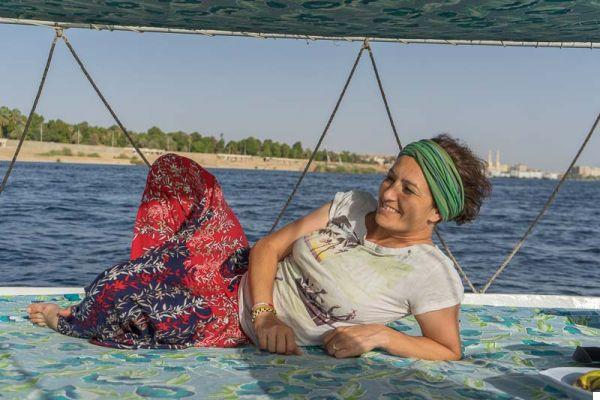
Despite the changes caused by the progression of time, a Nile cruise is still one of the most popular and above all romantic ways to see the sites of ancient Egypt.
It's partly so popular for tradition, partly for convenience: after all, many of the most famous sights are located directly on the river, making cruising the easiest way to visit them.
At night, many of the temples and monuments are illuminated and their view from the water is simply breathtaking. During the day, the rural scenes you will see traveling from place to place have remained mostly unchanged for thousands of years.
Despite waking up early in the morning, cruises can also be wonderfully relaxing.
While navigating, you'll be able to get a feel for the country without having to go through the chaotic streets and insistent vendors that Egypt is famous for firsthand.
While the sites you visit along the way are inevitably crowded, you will be lucky enough to have the knowledge of an expert guide.
Cons of a Nile cruise
For many visitors, the main drawback of a Nile cruise is not the influx of ships, nor the crowding (the latter is inevitable whether you visit them as part of a cruise or not).
The main disadvantage is theinflexibility of the program and of the cruise itself: in fact, taking part in a pre-established program dictates the visit and travel times.
If you want to spend more than a few hours exploring the wonders of Luxor temple complexes, for example, you may want to travel independently.
Right now, overland and DIY trips are equally easy to arrange and allow for more flexibility. You can also rent a car or take public transport (recommended) if you don't want to join an organized tour.
Many cruise itineraries focus exclusively on the most famous temples, which exclude minor points of interest such as Abydos and Dendera (but which are included in longer cruises).
If you have limited time in Egypt, you may prefer to focus on one or two viewpoints rather than spend most of your vacation transiting the river.
Likewise, the sheer amount of time spent on board can be an inconvenience if you are traveling with small children, or if you discover too late that you don't like the company of your fellow travelers.
State offre una economic Nile cruise but that includes all visits and places of interest with Egyptologist guide




